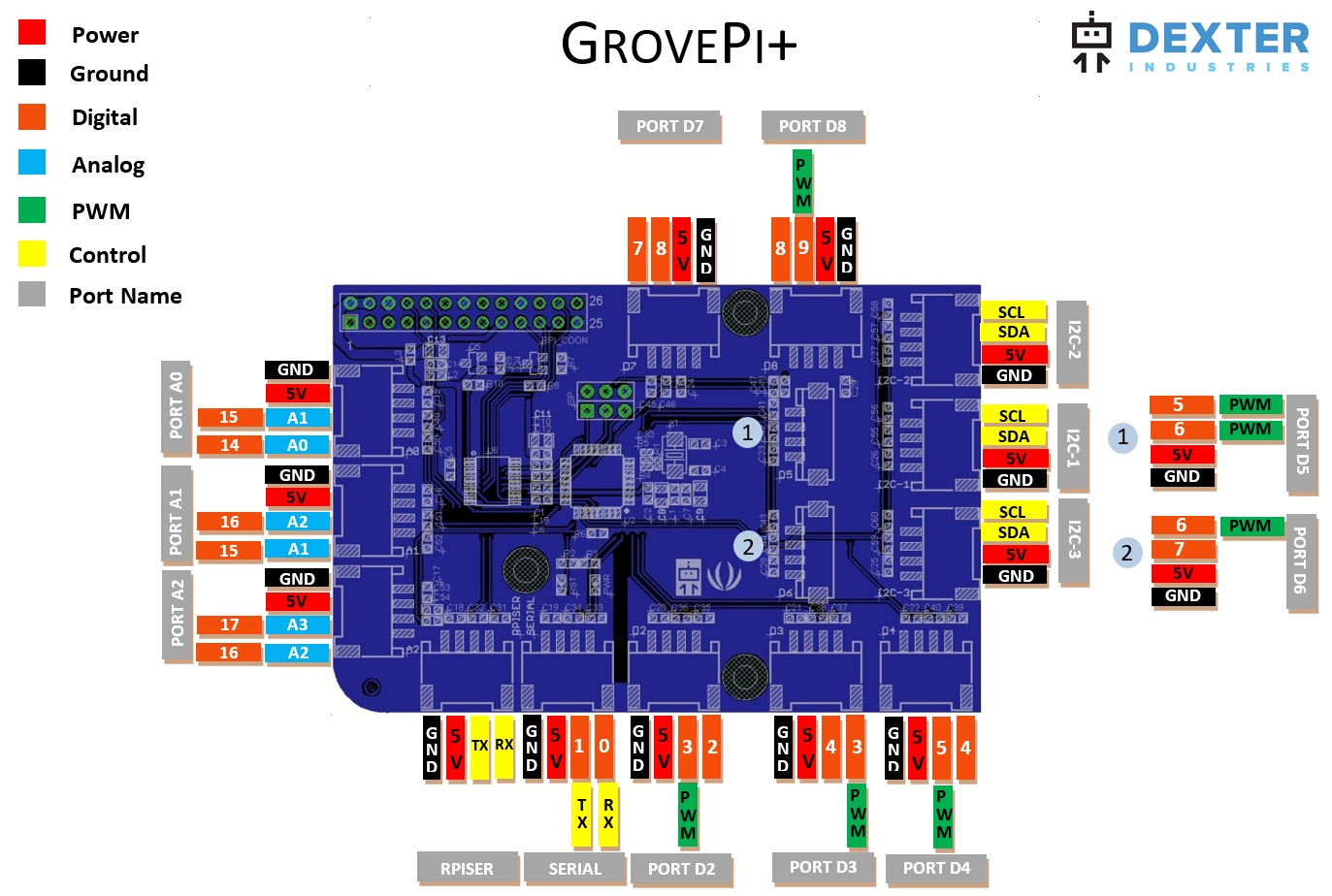GrovePi v0.6.1 GrovePi.Analog View Source
Perform analog I/O using the GrovePi.
Analog reads return 10-bit values (0-1023) from analog to digital converters on the GrovePi. These values map to voltages between 0 and 5 volts. Analog writes generate a steady square wave on supported pins (also called PWM). The connectors and pins on the GrovePi and GrovePiZero boards differ in their support for analog reads and writes.
When in doubt, consult the following diagram or the corresponding one for the GrovePiZero:

Analog reads can be performed on pins A0, A1, A2, and A3. For most Grove analog sensors, the proper pin to use is the one labeled on the port.
Analog writes only work on the PWM pins. E.g., pins 3, 5, 6, and 9. Just like the reads, for most Grove sensors, the proper pin to use is the same as the one labeled on the port.
Example use:
iex> pin = 3
iex> GrovePi.Analog.read(pin)
971
iex> GrovePi.Analog.write(pin, 200)
:okLink to this section Summary
Functions
Read the value from the specified analog pin. This returns a value from 0-1023 that maps to 0 to 5 volts
Write an analog value to a pin. The GrovePi maps the specified value (0-255) to a duty cycle for a 1.024 ms square wave (~976 Hz). This can be used to dim an LED, for example, by turning the output on only a fraction of the time
Link to this section Types
Link to this section Functions
read(atom(), GrovePi.pin()) :: adc_level() | {:error, term()}
Read the value from the specified analog pin. This returns a value from 0-1023 that maps to 0 to 5 volts.
write(GrovePi.pin(), pwm()) :: :ok | {:error, term()}
write(atom(), GrovePi.pin(), pwm()) :: :ok | {:error, term()}
Write an analog value to a pin. The GrovePi maps the specified value (0-255) to a duty cycle for a 1.024 ms square wave (~976 Hz). This can be used to dim an LED, for example, by turning the output on only a fraction of the time.